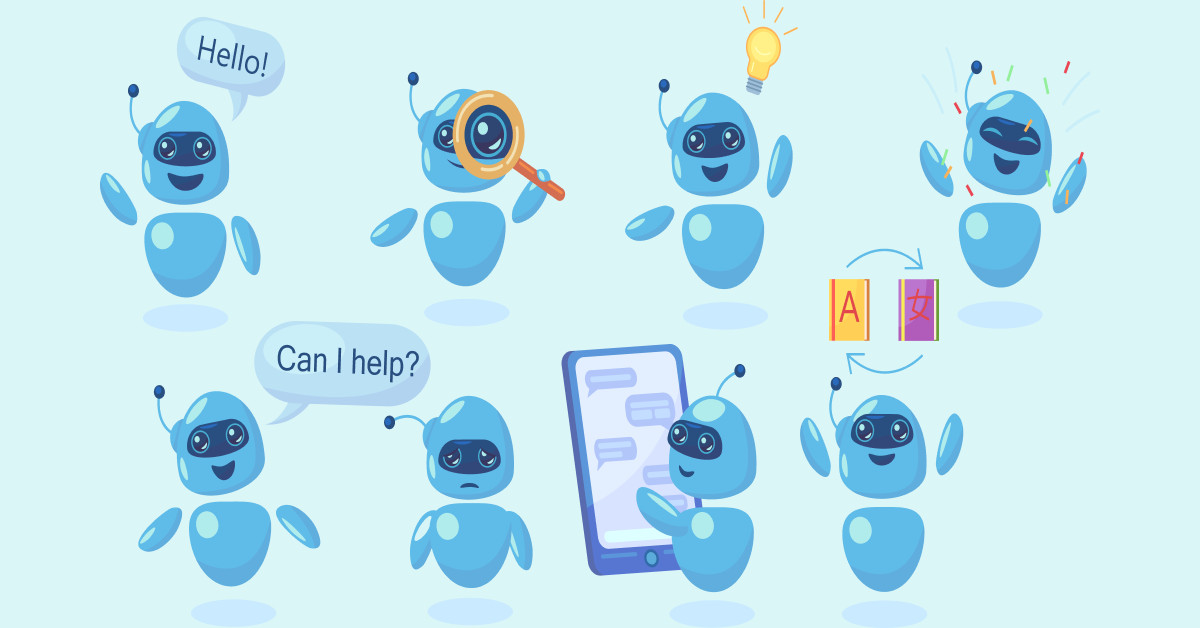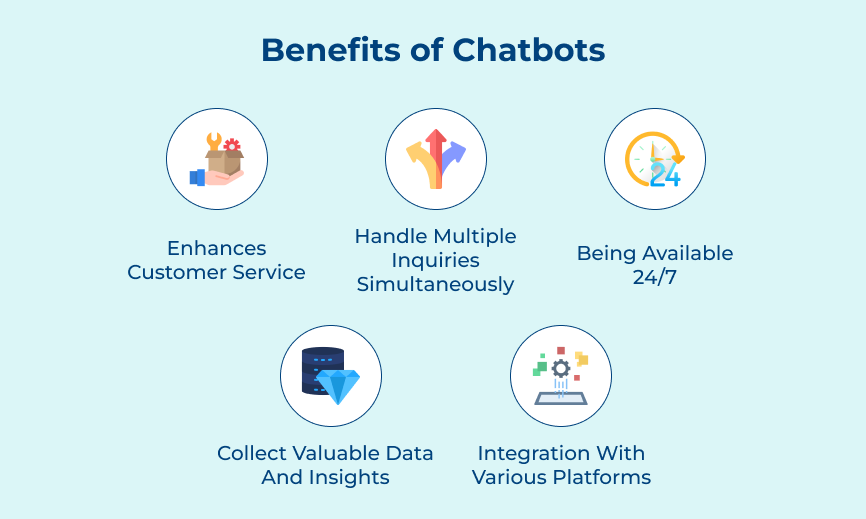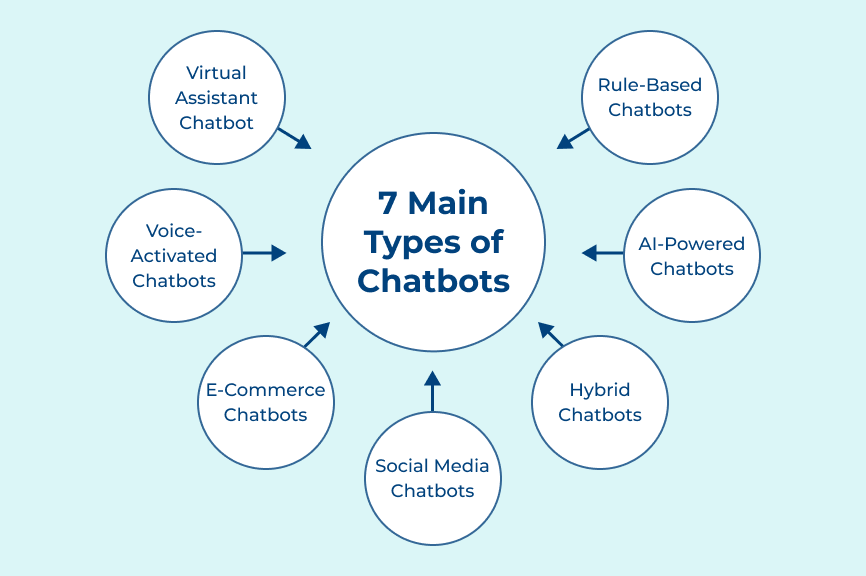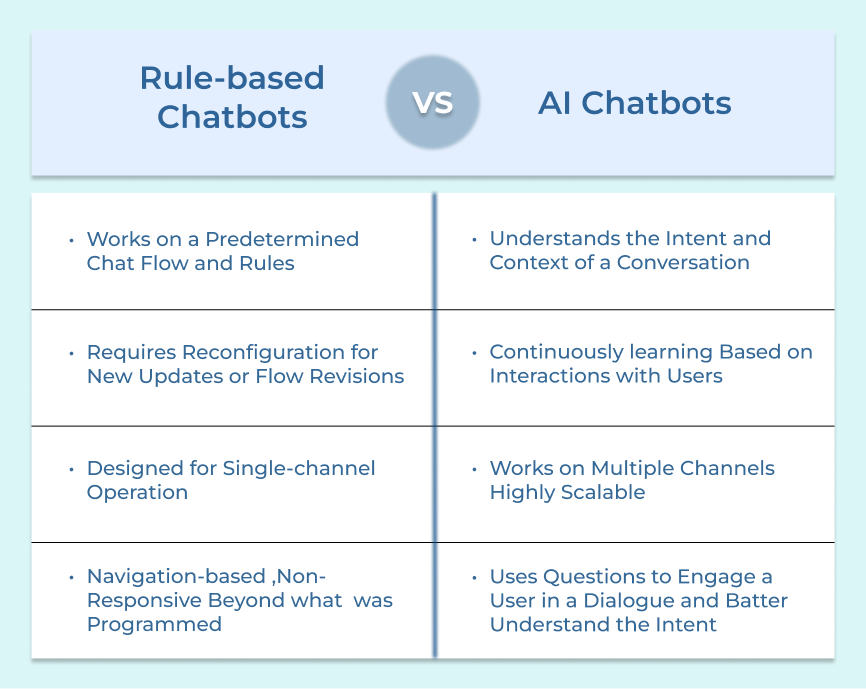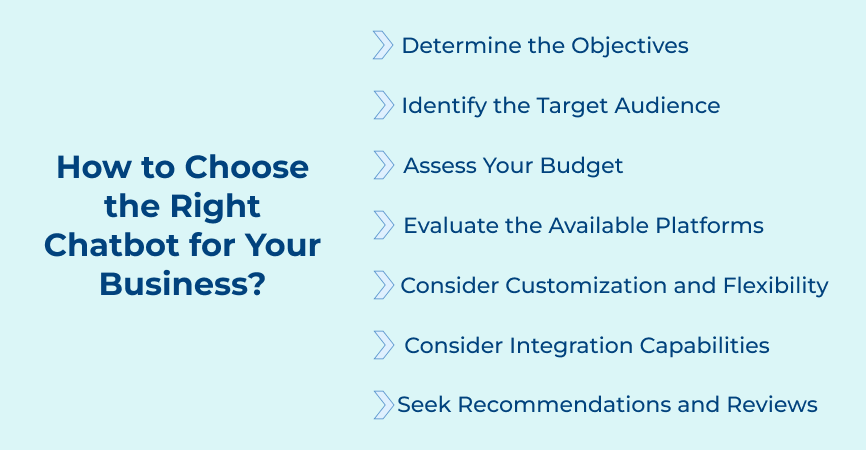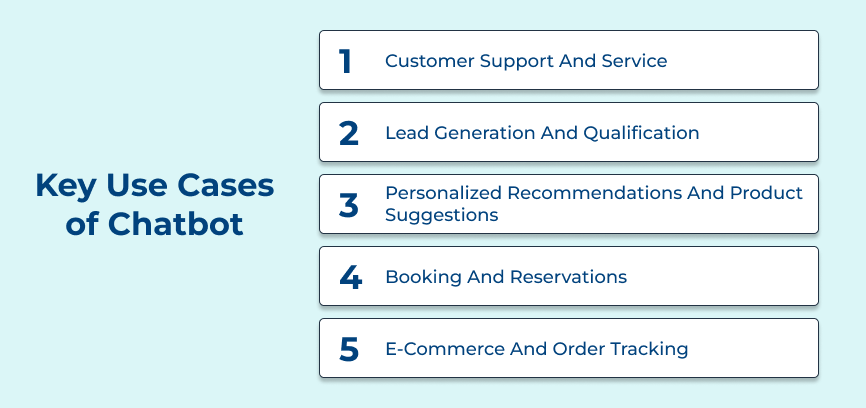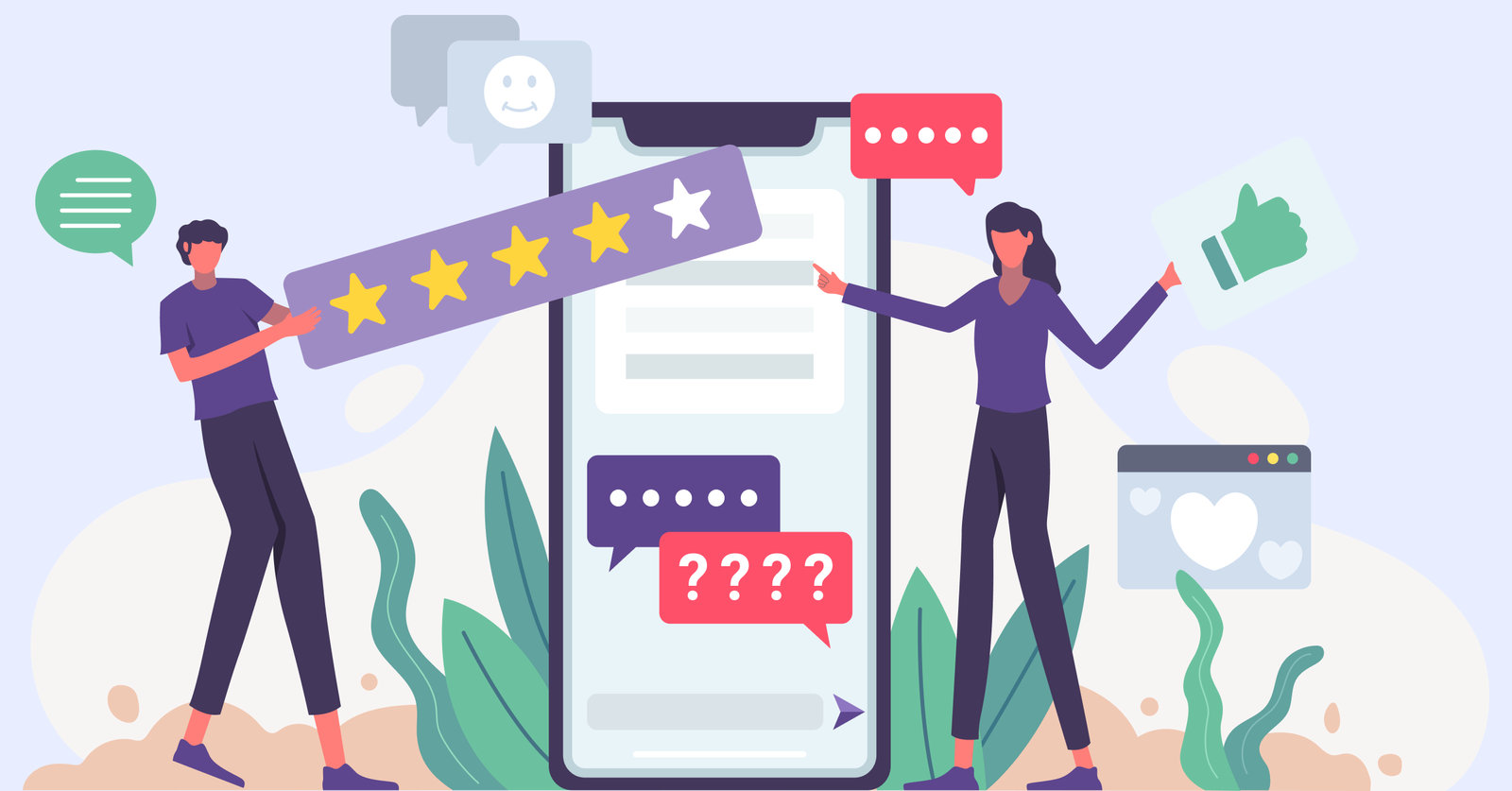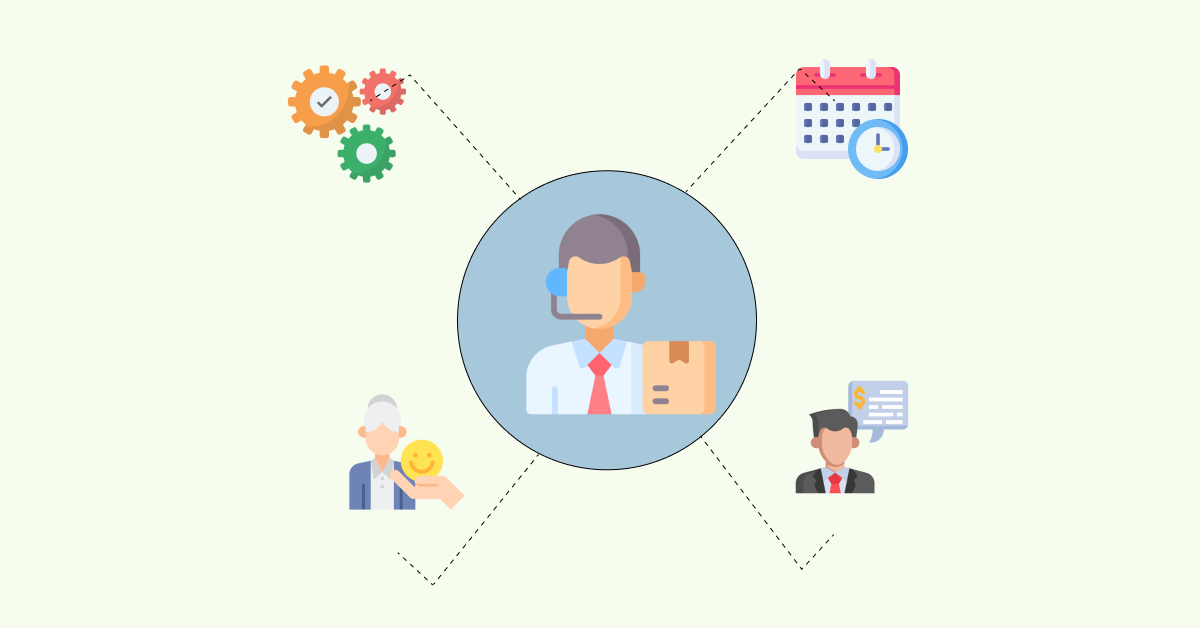1. Rule-Based Chatbots
Among the different kinds of chatbots available, one of the most commonly used types of chatbots is the rule-based chatbot. They operate based on predefined rules and are programmed to respond to specific user inputs. Leveraging a set of predefined rules allows them to offer efficient solutions to frequently asked questions and common customer concerns.
Rule-based bots find applications across various industries. They can be implemented in customer support to handle basic queries, saving resources for more complex issues. They are also utilized in e-commerce to assist with product recommendations, order tracking and general inquiries. Rule-based chatbots are commonly used in scheduling systems, virtual assistants and information retrieval platforms.
Best practices:
- Regularly update the rules based on user feedback and data analysis. It helps the chatbot adapt and improve its responses over time.
- Integrate the chatbot with natural language processing capabilities to enhance its understanding and response capabilities.
- Understanding the limitations of rule-based chatbots and when to transition to more advanced chatbot technologies is key for long-term success.
2. AI-Powered Chatbots
AI-powered chatbots have quickly become a game-changer in the world of customer interaction. The types of AI chatbots are quite innovative as they can automate conversations and provide human-like responses to user queries. They have emerged as a powerful tool, revolutionizing customer service and boosting efficiency. 34% of customers would be comfortable speaking with customer service through an AI chatbot.
The AI-powered contextual chatbots find their applications across a wide range of industries. E-commerce companies utilize them to handle customer inquiries and provide personalized product suggestions. Service-oriented businesses employ chatbots to schedule appointments and assist with reservations.
Best practices:
- Carefully design the chatbot’s conversational flow to ensure an intuitive and seamless user experience.
- Regularly train the chatbot’s AI algorithms to maintain accuracy and relevance.
- Integrate the chatbot with live human support to ensure a smooth transition to human intervention when necessary.
3. Hybrid Chatbots
Hybrid chatbots combine the best features of Rule-based Chatbots and AI-powered Chatbots, offering a balanced approach to customer interaction. Such kinds of chatbots are designed to handle both simple and complex queries, ensuring the users get accurate responses. They leverage predefined rules and machine learning algorithms to provide a seamless user experience.
Hybrid Chatbots are used across various industries such as e-commerce, customer service and healthcare. They provide timely assistance, answer frequently asked questions and offer product recommendations, among other functions. Businesses can easily integrate them into websites, messaging platforms or mobile applications, making them accessible to customers as per their preference.
Best practices:
- Ensure that the chatbot’s responses align with the brand’s tone and voice to maintain consistency.
- Regularly review and update the chatbot’s knowledge base to keep it up-to-date with the latest information.
- Analyze conversations to identify areas for improvement and gather valuable insights to enhance the user experience further.
4. Social Media Chatbots
Social media chatbots are the types of chatbots that have revolutionized the way businesses interact with their customers. They serve as AI-powered virtual agents as they are designed to mimic human-like conversations and provide instant responses to user queries on social media platforms. 60% of millennials who use social media often have tried chatbots.
Social media chatbots can be found across various social media platforms such as Facebook Messenger, WhatsApp and Twitter. They are used by businesses of all sizes, ranging from e-commerce companies to airlines and banks. Social media chatbots streamline customer support processes, reduce response time and increase operational efficiency.
Best practices:
- Customize the chatbot’s conversational style to match the brand’s tone and personality.
- Integrate the chatbot with other tools and systems to provide a seamless user experience.
- Make the customers aware that they are interacting with a chatbot, to manage expectations and avoid confusion.
5. E-Commerce Chatbots
ECommerce chatbots are the types of chatbots specifically designed to cater to the needs of e-commerce platforms. They provide personalized assistance to customers, guiding them through the entire purchase process and answering any questions they may have. 47% of customers are willing to purchase an e-commerce product using chatbots because they provide tailored product recommendations.
The e-commerce chatbots are predominantly used on e-commerce websites or mobile apps. They work to assist customers with product recommendations, answer frequently asked questions and even process orders. Brands can even integrate them into messaging platforms like Whatsapp Messenger, providing a seamless experience for customers.
Best practices:
- Personalize the chatbot’s responses to make the interaction feel more human-like.
- Use proactive messaging to engage customers and suggest relevant products or promotions.
- Monitor customer interactions with the chatbot to identify areas for improvement and optimize performance.
6. Voice-Activated Chatbots
Voice-activated chatbots have become increasingly popular in recent years as the AI chatbot types that use voice recognition technology to interact with users. One of the key advantages of voice bots is their importance in enhancing user engagement and satisfaction.
Voice-activated chatbots work by utilizing natural language processing (NLP) and speech recognition technology. They listen to the spoken commands, convert them into text, analyze the input and generate appropriate responses. Voice-activated chatbots are particularly popular in the healthcare industry. Patients can easily inquire about symptoms, get medication reminders or schedule appointments through voice commands.
Best practices:
- Ensure the chatbot is trained to understand different accents and speech patterns to cater to a diverse user base.
- Regularly update the chatbot’s database to keep up with current information and improve its responses.
- Consider integrating voice-activated chatbots with other technologies to enhance their capabilities and provide more personalized interactions.
7. Virtual Assistant Chatbot
Virtual assistant chatbots provide automated assistance to users, answering queries and offering solutions in real-time. Owing to their ability to handle multiple customer interactions simultaneously, they improve efficiency and reduce response times. Virtual assistant chatbots are those types of AI chatbots that offer 24/7 support, eliminating the need for employees to be always available.
The virtual assistant chatbots find applications in various industries. They can be integrated into websites or messaging platforms to assist customers with frequently asked questions. Companies have also been using them to guide their customers through the purchase journey, provide troubleshooting solutions or even automate ticket creation for more complex issues.
Best practices:
- Ensure the chatbot has a clear and concise personality that aligns with the brand.
- Regularly analyze customer interactions to identify areas for improvement and adjust bot responses accordingly.
- Remember that chatbots are not meant to replace human interaction entirely but act as a valuable supplement to customer support teams.
Rule-based Chatbots vs. AI Chatbots
Check out the core differences between rule-based chatbots and AI chatbots, helping you determine the best fit for your unique requirements.
